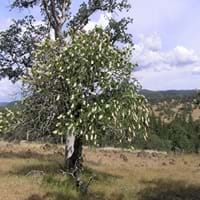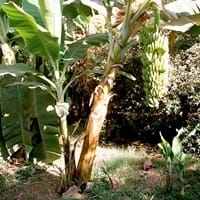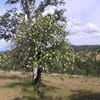Life Span
Perennial
Annual
Type
Shrub
Tender Perennial
Origin
California
Hybrid origin
Types
Not Available
Flowering Plants, Fruits, Herbs
Number of Varieties
Not Available
Habitat
Hillside
Subtropical climates, Tropical rainforest, Tropical regions
USDA Hardiness Zone
7-9
8-15
AHS Heat Zone
8-1
Not Available
Sunset Zone
3a, 3b, 4, 5, 6, 7, 8, 9, 10, 14, 15, 16, 17, 18, 19, 20, 21, 22, 23, 24
H1, H2, 14, 15, 16, 17, 18, 19, 20, 21, 22, 23, 24
Habit
Oval or Rounded
Clump-Forming
Flower Color
White, Pink
White, Yellow, Purple, Brown
Flower Color Modifier
Bicolor
Bicolor
Fruit Color
Yellow Brown
Green, Light Green
Leaf Color in Spring
Light Green
Green
Leaf Color in Summer
Green
Green
Leaf Color in Fall
Not Available
Green
Leaf Color in Winter
Not Available
Light Green
Leaf Shape
Oval
Oblanceolate , Ovate
Plant Season
Spring, Summer, Fall, Winter
Spring, Summer, Fall, Winter
Sunlight
Full Sun, Partial Sun
Full Sun, Partial Sun
Type of Soil
Clay, Loam, Sand
Loam, Sand
The pH of Soil
Acidic, Neutral
Acidic, Neutral, Alkaline
Soil Drainage
Well drained
Average
Bloom Time
Late Spring, Early Summer
Indeterminate
Tolerances
Drought, Salt
Drought
Where to Plant?
Ground
Container, Ground
How to Plant?
Seedlings
Divison
Plant Maintenance
Medium
Medium
Watering Requirements
Keep the ground moist but not water-logged, Requires regular watering, Requires watering in the growing season
Water every two or three days during warmer months
In Summer
Lots of watering
Lots of watering
In Spring
Moderate
Moderate
In Winter
Average Water
Average Water
Soil pH
Acidic, Neutral
Acidic, Neutral, Alkaline
Soil Type
Clay, Loam, Sand
Loam, Sand
Soil Drainage Capacity
Well drained
Average
Sun Exposure
Full Sun, Partial Sun
Full Sun, Partial Sun
Pruning
Remove damaged leaves, Remove dead leaves, Remove dead or diseased plant parts
Remove damaged leaves, Remove dead branches, Remove dead leaves
Fertilizers
All-Purpose Liquid Fertilizer
All-Purpose Liquid Fertilizer
Pests and Diseases
Red blotch
Red blotch
Plant Tolerance
Drought
Drought
Flower Petal Number
Not Available
Not Available
Foliage Texture
Medium
Bold
Foliage Sheen
Glossy
Glossy
Attracts
Birds, Butterflies
Insects
Allergy
Not Available
Anaphylaxis
Aesthetic Uses
Beautification, Landscape Designing, Showy Purposes
Not Available
Beauty Benefits
Not Available
Not Available
Environmental Uses
Air purification
Air purification
Medicinal Uses
Not Available
anti-cancer, Asthma, Diarrhea, Improve heart health, increase memory, lowering blood pressure, Potassium
Part of Plant Used
Fruits
Flowers, Fruits, Leaves, Root, Sap
Other Uses
Decoration Purposes, Showy Purposes, Used as Ornamental plant
Animal Feed, Fine spines and trichomes are used as fiber for weaving, Leaves used for wrapping food, Pulp can be used to make rope place mats and other goods
Used As Indoor Plant
No
No
Used As Outdoor Plant
Yes
Yes
Garden Design
Dried Flower, Everlasting, Feature Plant, Hedges, Mixed Border, Screening, Wind Break
Edible, Fruit / Fruit Tree, Mixed Border, Screening / Wind Break, Tropical
Botanical Name
AESCULUS californica
Musa acuminata × Musa balbisiana
Common Name
California Buckeye
Banana, Hybrid Banana, Saba Banana
In Hindi
कैलिफोर्निया Buckeye
Saba kela
In German
California Buckeye
saba Banane
In French
California Buckeye
saba banane
In Spanish
California Buckeye
saba plátano
In Greek
Καλιφόρνια Buckeye
saba banana
In Portuguese
California Buckeye
saba de banana
In Polish
Kalifornia Buckeye
saba banana
In Latin
California Buckeye
Saba Musa sapientum fixa
Phylum
Magnoliophyta
Magnoliophyta
Class
Magnoliopsida
Liliopsida
Order
Sapindales
Zingiberales
Family
Sapindaceae
Musaceae
Clade
Angiosperms, Eudicots, Rosids
Not Available
Tribe
Not Available
Not Available
Subfamily
Hippocastanoideae
Not Available
Season and Care of California Buckeye and Saba Banana
Season and care of California Buckeye and Saba Banana is important to know. While considering everything about California Buckeye and Saba Banana Care, growing season is an essential factor. California Buckeye season is Spring, Summer, Fall and Winter and Saba Banana season is Spring, Summer, Fall and Winter. The type of soil for California Buckeye is Clay, Loam, Sand and for Saba Banana is Loam, Sand while the PH of soil for California Buckeye is Acidic, Neutral and for Saba Banana is Acidic, Neutral, Alkaline.
California Buckeye and Saba Banana Physical Information
California Buckeye and Saba Banana physical information is very important for comparison. California Buckeye height is 460.00 cm and width 460.00 cm whereas Saba Banana height is 460.00 cm and width 370.00 cm. The color specification of California Buckeye and Saba Banana are as follows:
California Buckeye flower color: White and Pink
California Buckeye leaf color: Light Green
Saba Banana flower color: White, Yellow, Purple and Brown
- Saba Banana leaf color: Green
Care of California Buckeye and Saba Banana
Care of California Buckeye and Saba Banana include pruning, fertilizers, watering etc. California Buckeye pruning is done Remove damaged leaves, Remove dead leaves and Remove dead or diseased plant parts and Saba Banana pruning is done Remove damaged leaves, Remove dead branches and Remove dead leaves. In summer California Buckeye needs Lots of watering and in winter, it needs Average Water. Whereas, in summer Saba Banana needs Lots of watering and in winter, it needs Average Water.





